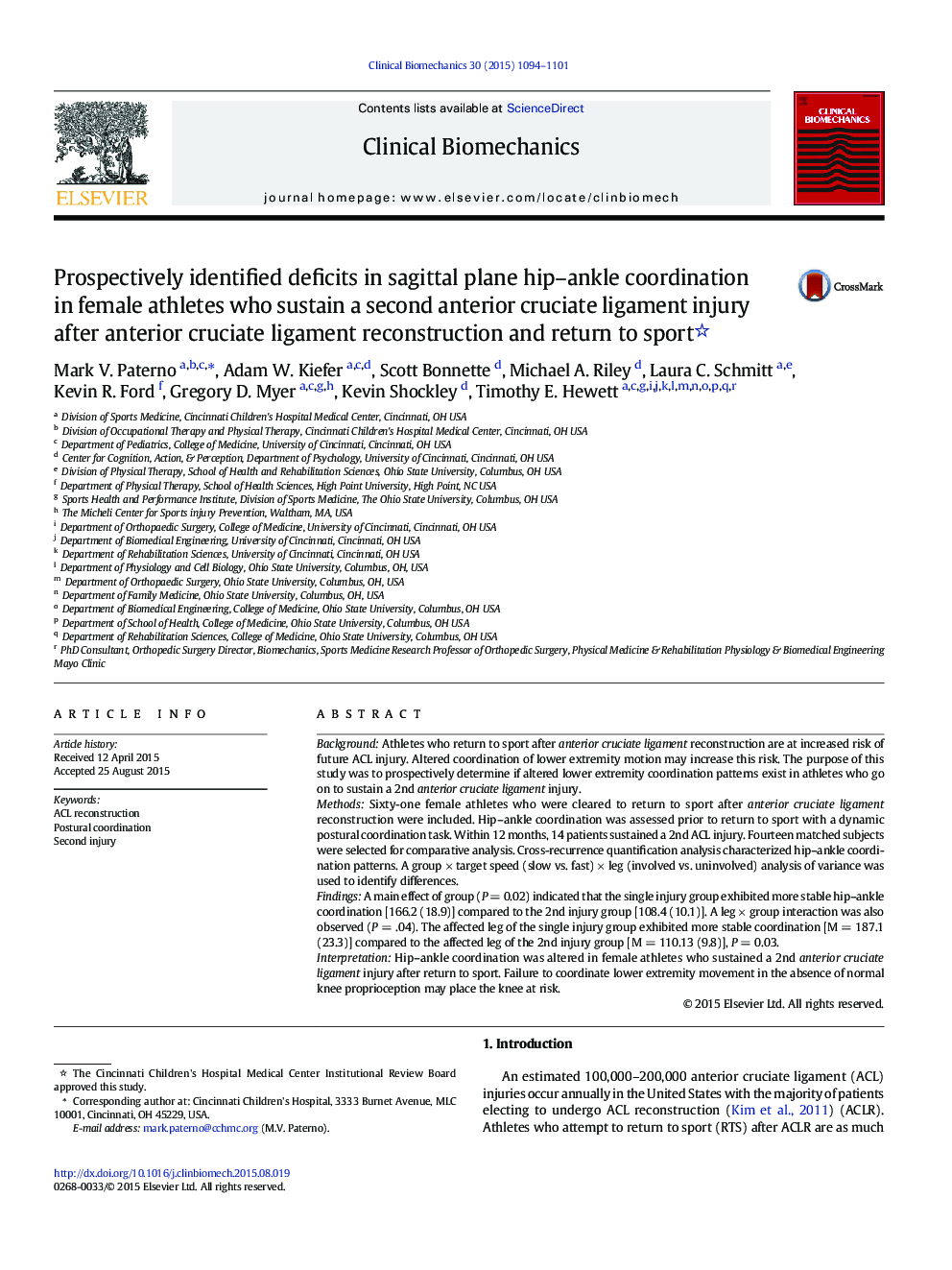| Article ID | Journal | Published Year | Pages | File Type |
|---|---|---|---|---|
| 4050077 | Clinical Biomechanics | 2015 | 8 Pages |
•Coordination deficits exist in patients who sustain repeat knee injuries.•Altered postural coordination may lead to increased risk of future injury.•Altered postural coordination may need to be addressed post-operatively.•Postural coordination may need to be included in return to play decision making.
BackgroundAthletes who return to sport after anterior cruciate ligament reconstruction are at increased risk of future ACL injury. Altered coordination of lower extremity motion may increase this risk. The purpose of this study was to prospectively determine if altered lower extremity coordination patterns exist in athletes who go on to sustain a 2nd anterior cruciate ligament injury.MethodsSixty-one female athletes who were cleared to return to sport after anterior cruciate ligament reconstruction were included. Hip–ankle coordination was assessed prior to return to sport with a dynamic postural coordination task. Within 12 months, 14 patients sustained a 2nd ACL injury. Fourteen matched subjects were selected for comparative analysis. Cross-recurrence quantification analysis characterized hip–ankle coordination patterns. A group × target speed (slow vs. fast) × leg (involved vs. uninvolved) analysis of variance was used to identify differences.FindingsA main effect of group (P = 0.02) indicated that the single injury group exhibited more stable hip–ankle coordination [166.2 (18.9)] compared to the 2nd injury group [108.4 (10.1)]. A leg × group interaction was also observed (P = .04). The affected leg of the single injury group exhibited more stable coordination [M = 187.1 (23.3)] compared to the affected leg of the 2nd injury group [M = 110.13 (9.8)], P = 0.03.InterpretationHip–ankle coordination was altered in female athletes who sustained a 2nd anterior cruciate ligament injury after return to sport. Failure to coordinate lower extremity movement in the absence of normal knee proprioception may place the knee at risk.
